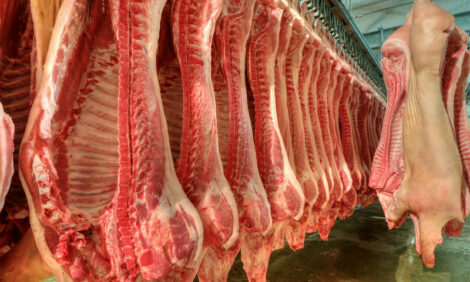



Market Preview: Time a Factor in Pork Puzzle
US - In this week's Market Preview from National Hog Farmer, Steve Meyer writes about how time is a common denominator in the pork supply and demand puzzle.When will consumers back away from high-priced pork? That’s a question that I have heard frequently the past few weeks. It comes mainly from producers who see today’s $100/cwt., carcass, quote on June futures and wonder just how much retail price pressure their ultimate customers will withstand. I’m sure packers and processors are thinking the same thing as they see their potential hog costs rise steadily.
The answer, as with most economic matters, is “it depends.“ It depends on the reason for higher prices, the prices of substitutes, consumers’ income levels, and their propensity to spend money on food, in general, and meat and pork in particular.
Prices can rise for many reasons, but they basically fall into two well-known categories: supply issues and demand issues. Isn’t that a shocker?

Supply issues generally focus on productivity and production costs and depend on the prices of inputs, technology, management, health and a host of other factors. When costs rise, supply decreases. That is – the quantity that producers are willing and able to sell at each alternative price gets smaller. The supply curve shifts up and to the right as Figure 1 shows. When this happens, lower output is the reason for higher prices.
Supply-driven prices and lower consumer purchases are the flip sides of the same coin. Falling supply forces consumers to back off from the product, so the question about when they will back off is really not appropriate.
This decline of output in the face of higher prices is a primary reason that “cost-push inflation“ cannot last long. The quantity of output simply gets smaller and smaller as the cost rises.

The other reason that prices increase is an increase in demand that causes “demand-pull inflation.“ In this case, prices rise, but output increases over time (assuming the supply curve is steady) as in Figure 2. Such an increase can be caused by a shift of consumer preferences, higher incomes, higher propensities to spend money on the commodity in question or a shift in relative prices.
But Figures 1 and 2 leave out something important – time. None of this happens instantaneously. It takes time for supply to change in response to a change in input prices or technology or disease. Likewise, it takes time for consumers to react to a change in income or a recession that rattles their confidence in the future and, thus, their willingness to part with cash or even a change in the price level of the good in question.
In my opinion, we saw the direct impact of cost-push inflation in 2009 and the first half of 2010. Pork output fell because producers had reduced the sow herd in 2008 and 2009 as costs exploded. In addition, poor quality corn (sort of a “reverse technology“ impact) caused poor performance and lighter slaughter weights, restricting output even further. Retail prices began climbing in January 2010 and hit a new record in May. That record was followed by five more records through October before higher output (primarily due to heavier hogs driven by much better corn quality last fall) caused prices to fall in November and December.
But now we are looking at about the same level of pork output for 2011 – likely higher the first half of the year and lower in the second – but record-high futures prices. Equal output, growing exports and higher population do add up to lower per capita pork supplies, but projections for this year are not large enough to drive hog prices 15-20 per cent higher.
Demand is the Driver
The November demand index was 14 per cent higher than one year earlier, indicating that the green demand line in the figures has moved significantly up and to the right. November demand indexes for beef and chicken, while not as positive as that of pork, were up sharply, as well, suggesting that this is more than just a pork phenomenon. It now looks like the meat protein market, in general, has improved. Perhaps consumers’ attitudes and spending are doing better than other data are indicating.
And it appears this may go on for a while. Beef prices are rising and will almost certainly hit new records this spring and summer. Chicken companies have slowed their expansions and will have to push their prices higher to cover the latest round of cost increases. As beef and chicken prices rise, pork will be relatively cheaper, which means consumers who may have found it too expensive so far may rethink that decision.
I’m not terribly worried about consumer push-back on high pork prices. A recovering economy, a relatively weak US dollar and falling supplies of two major competitor products will all be supportive to demand. And output this year is going to be about the same as last year. Consumers will buy what we have available in the United States and other factors may dictate that they continue to pay record or near-record prices for the pork available in 2011.
Congratulations Steve!
NB: Steve Meyer received the 2010 Master Pork Producer Award from the Iowa Pork Producers Association during their annual banquet. In addition, his Economic Outlook seminar, sponsored by National Hog Farmer, drew a full house and was the top-rated seminar at the Iowa Pork Congress held in Des Moines last week.










